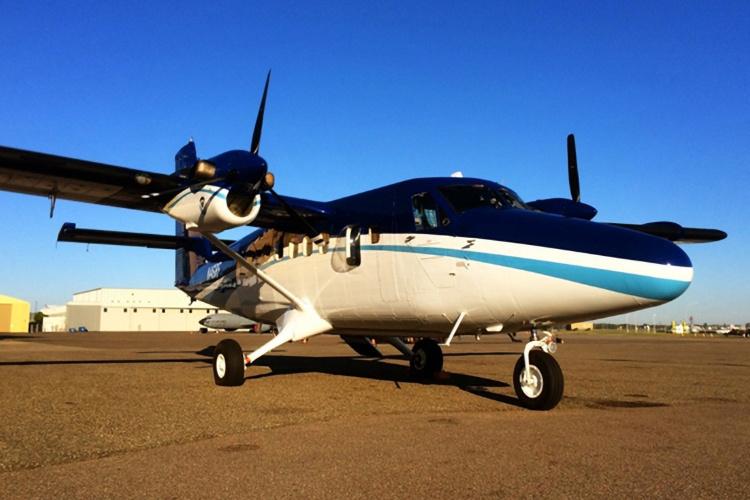How Many Steller Sea Lions Are There
It is impossible to know exactly how many Steller sea lions are in the ocean. Luckily, the sea lions converge every summer on shore to give birth, mate, and rear newborn pups. For us researchers, this is a fantastic opportunity to count how many are on shore every year.
However, we must conduct our survey within a three week window. The timing has to be just right to ensure females have given birth. Wait too long and the animals (including newborn pups) will begin to disperse.
On top of the time constraint, we have 2,500 miles of coast to survey, from southeast Alaska through the Aleutian Island chain.
Collecting Information From the Air
With the help of NOAA’s Aircraft Operations Center, we fly over the Steller sea lion rookery (where most of the pups are born) and haul-out sites in a Twin Otter plane.
Cameras mounted to the belly of the plane take high-resolution images of the sites below. Because it would take more than three weeks to survey all of the beaches, islands, and offshore rocks of Alaska, we alternate between the eastern (southeast Alaska through Kodiak) and western (the western Gulf of Alaska and Aleutian Islands) halves each year.
This year we are going to fly over southeast Alaska, Prince William Sound, the Kenai Peninsula, and Kodiak Island. We will start our survey in Sika on June 26 and end near Kodiak on July 10.

This is what Steller sea lions look like from 700 ft.
Technology Helps Us Cover More Ground
Our group also uses uncrewed aircraft to survey Steller sea lions, primarily in hard-to-reach sites of the Aleutian Islands. This survey is done off the U.S. Fish and Wildlife research vessel Tiglax when we are surveying from the Twin Otter. See this link for more information.
Analyzing Collected Data
At the end of the survey, two scientists will independently count every sea lion in the 1000s of high-resolution images that we took.
Counts of Steller sea lions during the breeding season are a consistent proportion of the total population (since some are at-sea when our images are taken). However, when compared across years, these counts allow us to track population trends.

The Steller Sea lion aerial survey team.
Meet the Bloggers

Lowell Fritz
Lowell Fritz has been studying Steller sea lions since 1990 with NOAA Fisheries Alaska Fisheries Science Center in Seattle. His primary research interests are sea lion population dynamics, demographics, and interactions with commercial fisheries. He has also worked on fish during his NOAA career, particularly species eaten by sea lions, like Atka mackerel, walleye pollock (you know them as fish sticks and imitation “krab”), and Pacific cod. Lowell graduated from Bucknell University (B.A. Biology, 1976) and College of William and Mary (M.S. Marine Science, 1982). He started his science career in 1982 at Rutgers University as a Research Associate. At Rutgers, he worked at the Haskin Shellfish Research Laboratory in Bivalve, NJ (down the road from Shellpile… you can’t make this up) studying the shells of molluscs living in habitats ranging from freshwater lakes and streams to deep-sea hydrothermal vents.

Katie Luxa is a research scientist with the University of Washington’s Joint Institute for the Study of the Atmosphere and Ocean (JISAO). She has worked at the Alaska Fisheries Science Center for just over six years. She studies the food habits of Steller sea lions and northern fur seals by examining hard prey parts recovered from scats (fecal samples) and spews (regurgitations). Katie also helps plan and participate in various aerial-, vessel-, and land-based surveys of these two pinniped species. She received her undergraduate degree in Marine Science from the Southampton College of Long Island University and her Master’s degree from Western Washington University.

Joshua Cutler
Joshua Cutler is a research scientist with the University of Washington’s Joint Institute for the Study of Atmosphere and Ocean (JISAO). He has worked at the Alaska Fisheries Science Center for five years. Joshua develops data systems, conducts manned and uncrewed aerial surveys, and often conducts field work for various Steller sea lion and northern fur seal studies. He received his undergraduate degree from the University of Massachusetts and his Master’s degree from Sonoma State University.



